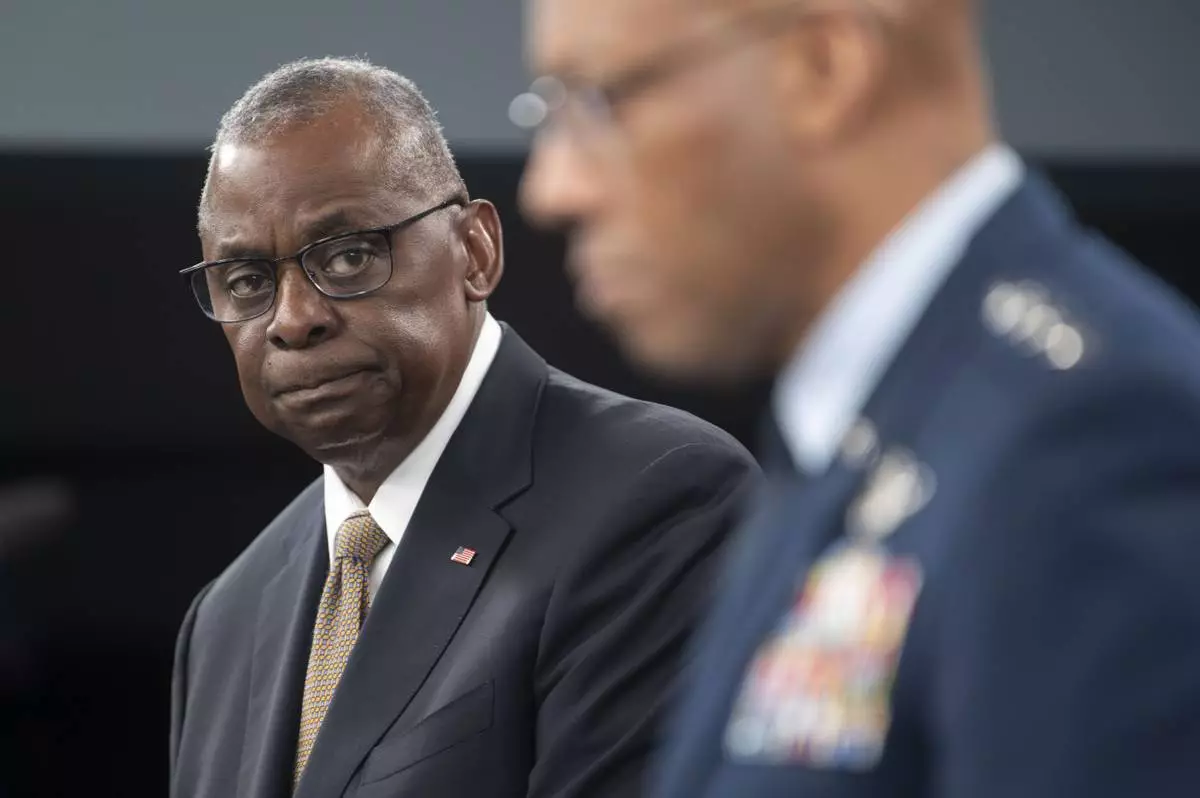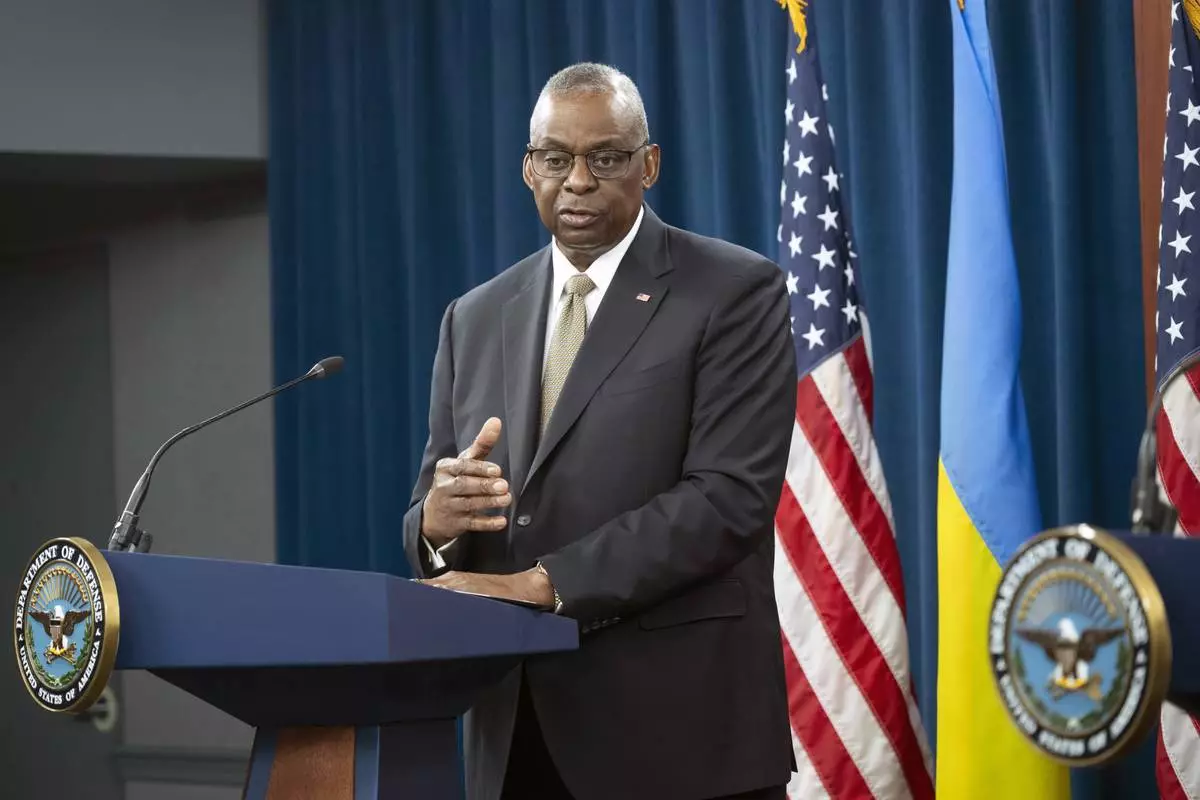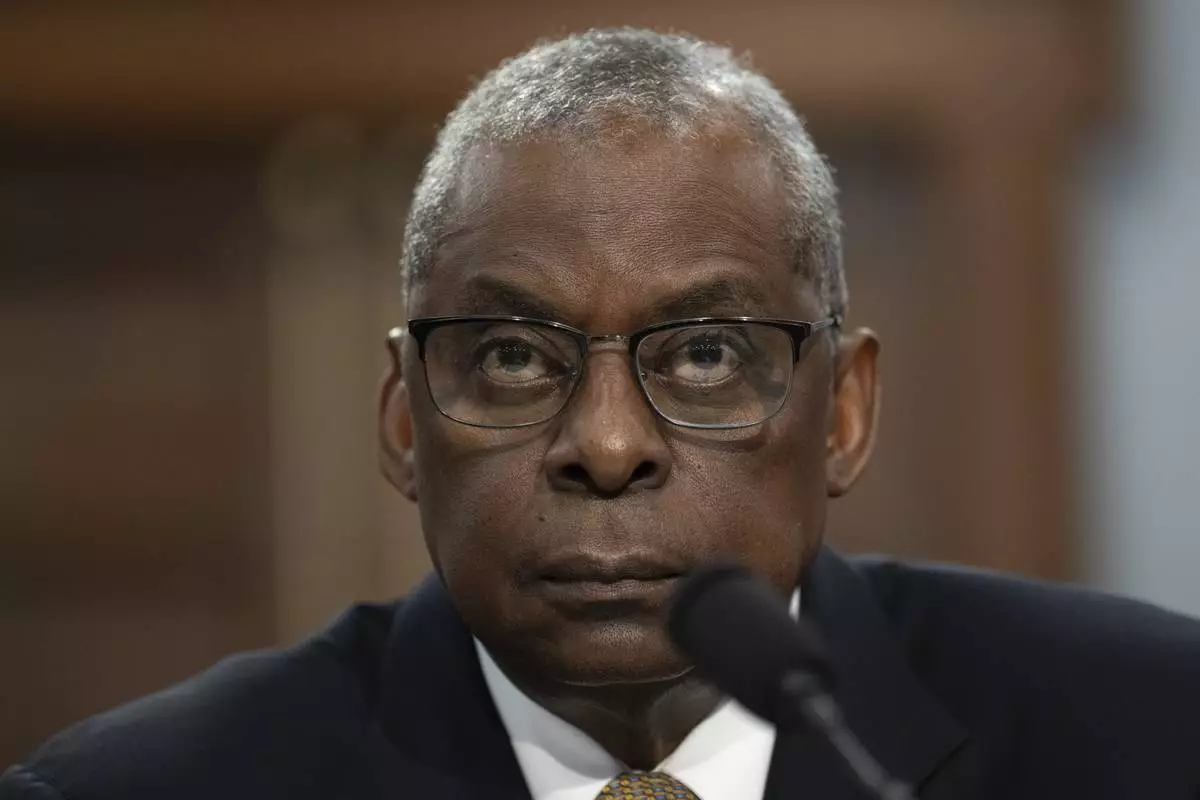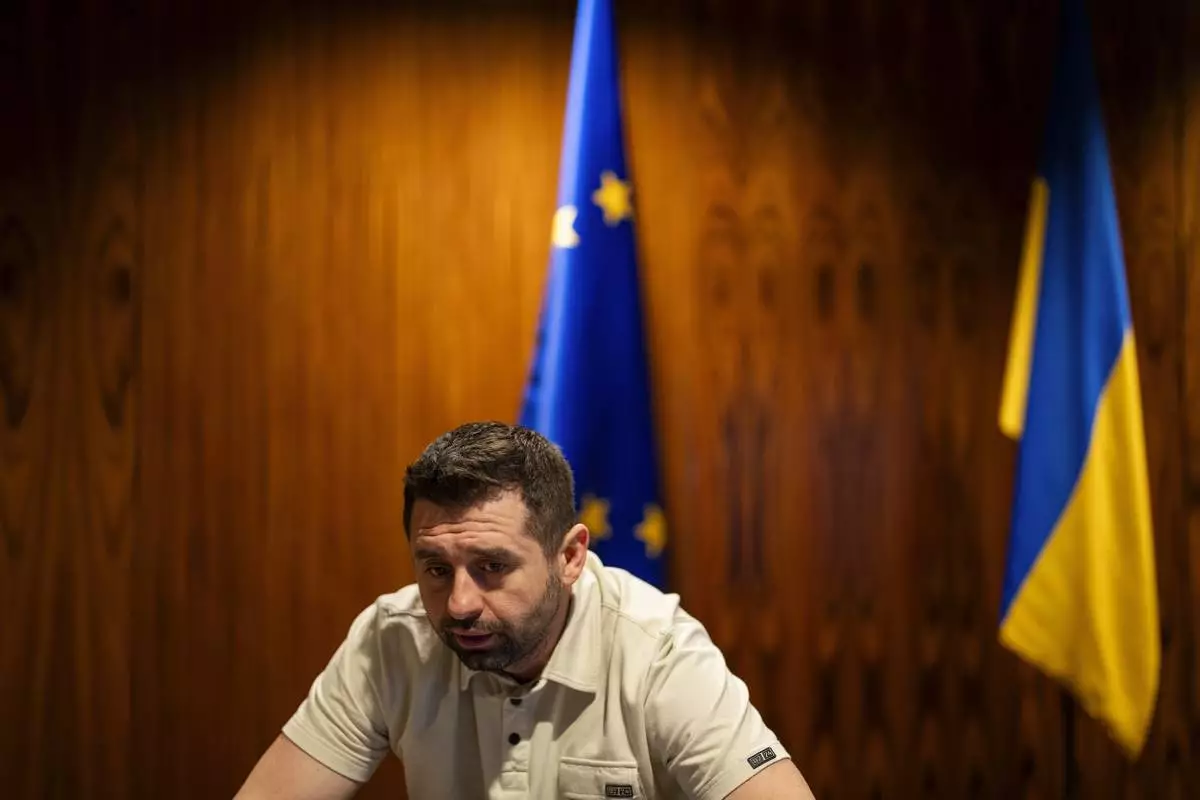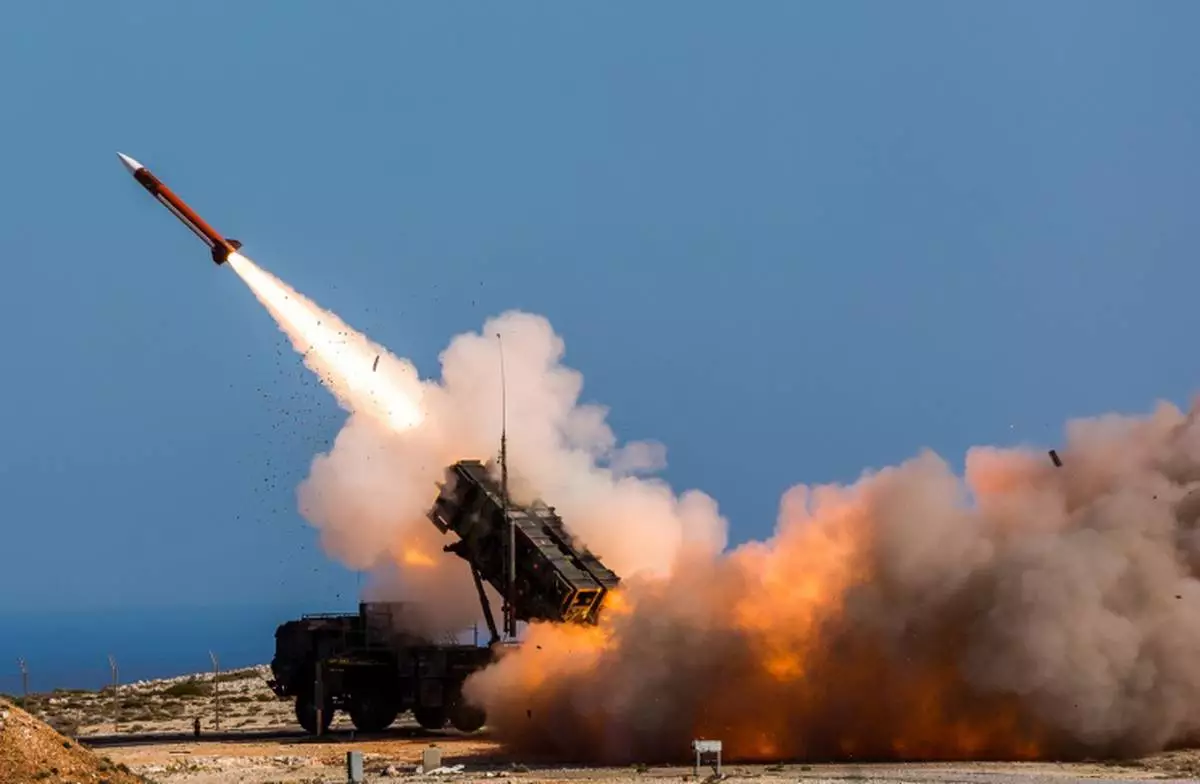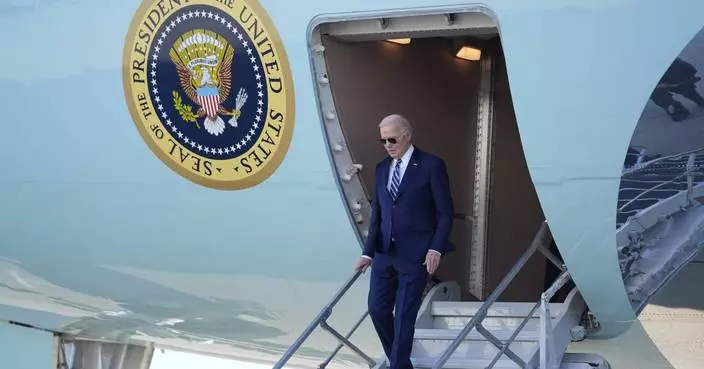Undaunted by President Donald Trump's tough talk on immigration, asylum-seekers are forming unusually long lines at the Mexican border, with parents and children sleeping on cardboard in the sweltering heat and waiting for days or even weeks to present themselves to U.S. inspectors.
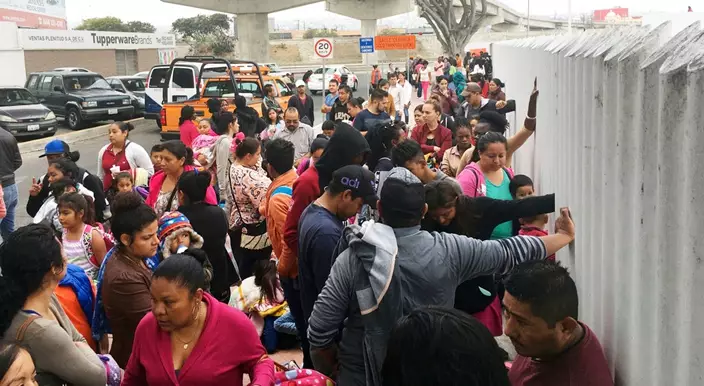
In this Monday, June 4, 2018 photo, people seeking political asylum in the United States line up to be interviewed in Tijuana, Mexico, just across the U.S. border south of San Diego. The Trump administration's fighting words for asylum seekers don't appear to be having much impact at U.S. border crossings with Mexico. Lines keep growing, so much that U.S. authorities can't take them all at once. (AP Photo/Elliot Spagat)
Wait times of a few hours or longer are not uncommon at the border. But the backlogs that have developed over the past several weeks at crossings in California, Arizona and Texas — and people sleeping out in the open for days at a time — are rare.
Telma Ramirez made the trip from El Salvador to seek asylum in the U.S. She arrived at the border in Tijuana with her 5-year-old son and year-old daughter, only to find a crush of others ahead of her.
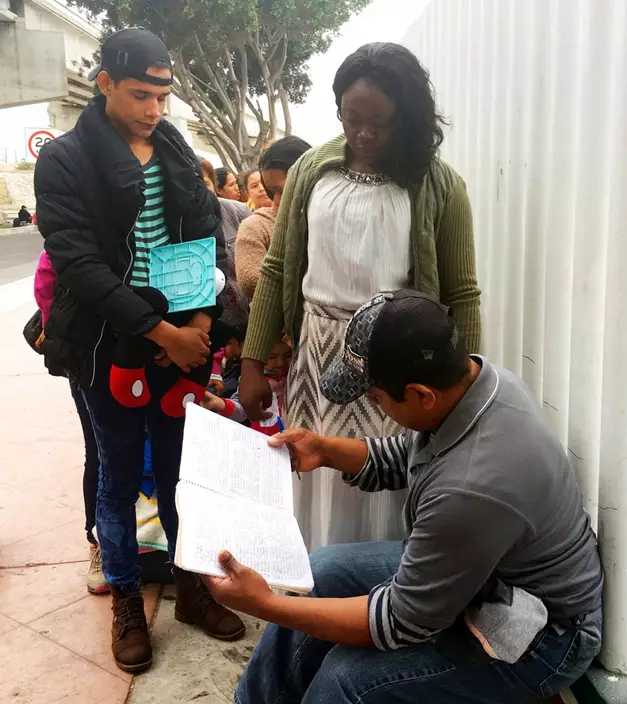
In this Monday, June 4, 2018 photo, volunteer Carlos Salio, right, interviews people seeking political asylum in the United States in Tijuana, Mexico, just across the U.S. border south of San Diego. The Trump administration's fighting words for asylum seekers don't appear to be having much impact at U.S. border crossings with Mexico. (AP Photo/Elliot Spagat)
The 27-year-old mother kept checking in at the border crossing to see if civilian volunteers were close to calling their numbers, in a scene that resembled the host station at a crowded restaurant.
Finally, on the 20th day, Ramirez made it to the front of the line.
"You must come every day to see if it's your turn. If you don't come, you'll lose your place in line," Ramirez said.
The exact reasons for the bottleneck are unclear. But the U.S. has been seeing a surge in requests for asylum over the past few years.
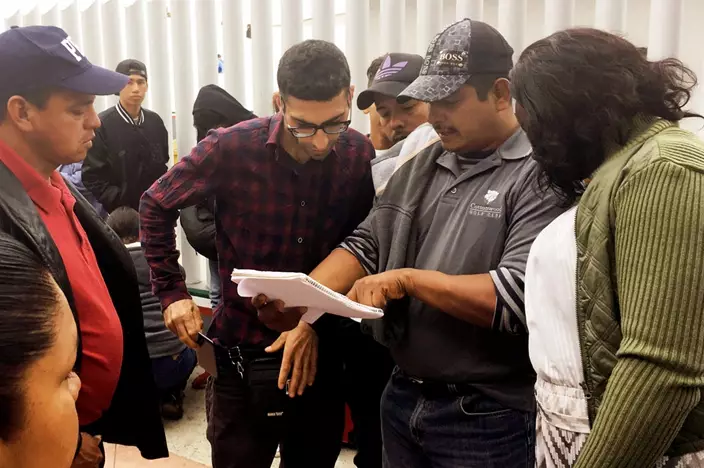
In this Monday, June 4, 2018 photo, volunteer Carlos Salio, second from right, interviews people seeking political asylum in the United States in Tijuana, Mexico, just across the U.S. border south of San Diego. The Trump administration's fighting words for asylum seekers don't appear to be having much impact at U.S. border crossings with Mexico. Lines keep growing, so much that U.S. authorities can't take them all at once. (AP Photo/Elliot Spagat)
A top Homeland Security Department official told lawmakers last month that new asylum filings tripled between 2014 and 2017 to nearly 142,000, the highest level in more than 20 years.
The official, Francis Cissna, director or U.S. Citizenship and Immigration Services, said the asylum backlog stood at 318,000 cases.
U.S. Customs and Border Protection said in a statement that any waits in Mexico are expected to be temporary. It said the number of people the agency can take depends on such factors as detention space, complexity of cases, translation requirements, medical needs and traffic at the crossing.
Some advocates insist the administration has enough resources to avoid the delays and is dragging its feet to discourage people from trying to come across.
The Trump administration has declared a new "zero-tolerance" policy of prosecuting every immigrant arrested for illegal entry, a practice that is separating parents from their children. Asylum-seekers who turn themselves in to border inspectors usually do not face such a fate.
At the Hidalgo, Texas, border crossing, parents and children sleep on cardboard on a bridge separating the two countries, waiting for U.S. authorities to signal their time has come, according to volunteers bringing them food and water.
Lawyers said asylum-seekers at the Nogales, Arizona, crossing are camping out for up for five days to make a claim.
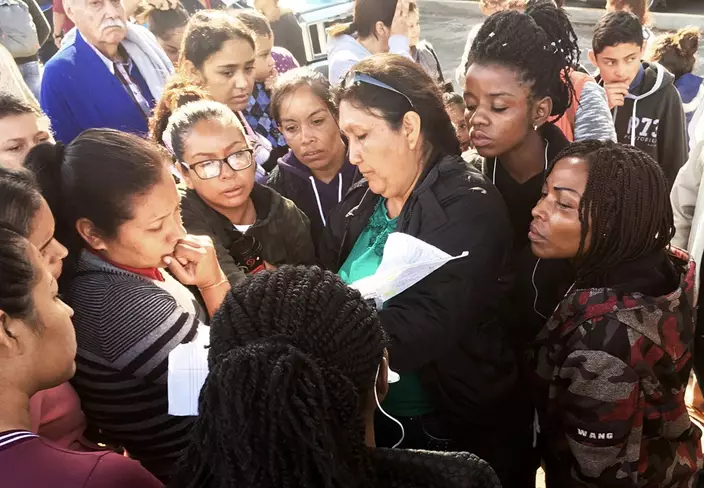
In this Monday, June 4, 2018 photo, a volunteer interviews people seeking political asylum in the United States in Tijuana, Mexico, just across the U.S. border south of San Diego. The Trump administration's fighting words for asylum seekers don't appear to be having much impact at U.S. border crossings with Mexico. (AP Photo/Elliot Spagat)
Across from San Diego, more than 100 asylum-seekers gathered Monday in a large plaza at the Tijuana side of the nation's busiest border crossing, alongside pushcart vendors selling oatmeal, tamales, burritos and smoothies. Families whose numbers aren't called return to Tijuana migrant shelters to pass the time.
Volunteer Carlos Salio told them the wait is about three weeks.
Salio consulted his tattered notebook of people who left their names with him, calling them out when their turn came.
When U.S. authorities said 50 would be allowed to claim asylum that day, Salio encouraged people to go back to their shelters.
"Everyone knows that when your number is close, you better be here," he told the crowd, many of them women with young children.
Separately, in another indication that Trump's hardline actions and rhetoric have had limited effect, the administration said Wednesday that border arrests topped 50,000 for a third straight month in May.
That is roughly three times what they were a year earlier and higher than the levels seen during much of the Obama administration.
It is not uncommon for asylum-seekers to have to wait. A caravan of Central Americans who provoked Trump's anger earlier this spring waited nearly a week.
The recent waits have not reached levels seen in 2016, when thousands of Haitians overwhelmed border inspectors in San Diego and had to bide their time for up to five weeks.
Under federal law and international treaties, people can obtain asylum in the U.S. if they have a well-grounded fear of persecution back home. Trump administration officials and their allies have charged that the system is rife with fraud and groundless claims and have demanded stricter standards.
Senior White House aide Stephen Miller said last month that the integrity of the immigration system is "completely shattered" and legitimate asylum cases have become "a needle in a haystack."
About 8 of every 10 asylum-seekers pass an initial screening and are then either held in an immigration detention center or released on bond into the U.S. while their cases wind through immigration courts, which can take years. Many asylum claims are eventually denied.
In Texas' Rio Grande Valley, people have been seen waiting on the bridge at Hidalgo for at least two weeks, according to witnesses and news reports.
One volunteer, Esperanza Chandler, said Friday that families have been told by U.S. authorities that there's no room to process them.
"Where they are, the sun hits them all day long," Chandler said. "They're under a little bit of covering, but the concrete and that whole area is very, very hot."
Volunteers brought umbrellas to provide some shade.
To keep order in Tijuana, activists created a system in which asylum-seekers give their names and are then issued numbers, ensuring that people who arrive after them won't jump ahead.
Mexicans dominated the list of asylum-seekers waiting to cross in San Diego. There were also large numbers of Central Americans.
Blanca Estela Garcia, 31, said she fled the violent Mexican state of Michoacan because a neighbor had been kidnapped and she received a death threat. She didn't know where she would go with her husband and children ages 14, 8 and 1 if they were allowed into the U.S.
"The important thing is not to go back," she said.
After spending her first night in Tijuana on the concrete outside the border crossing, she was given a number and planned to look for shelter for the next few weeks.



